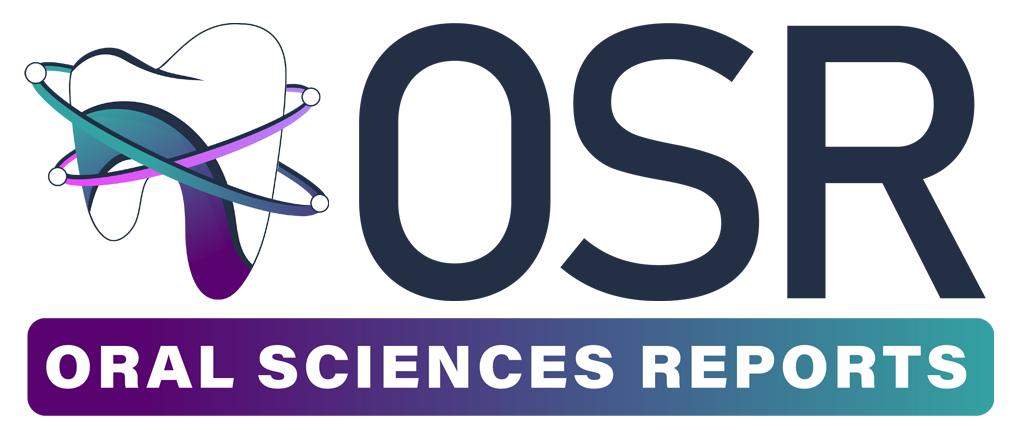Forensic Identification by Polymerase Chain Reaction of DNA Extracted from Primary Teeth with Dental Caries
Objectives: The aim of this research is to determine the effect of restoration time of deciduous teeth on human identification efficiency using microsatellite DNA
Methods: Using human genomic DNAs were isolated from deciduous molar in Thai children (n=26) under 12 years and were compared with DNA from the blood in sterile gauze pads. All samples were divided into 2 groups of 13 teeth, which were kept at room temperature for a period of 1 day and 1 month, respectively. Tooth DNAs were extracted using QIAamp® DNA Investigator and then microsatellite DNA on D3S1358, D5S818 and D16S539 loci were amplified using polymerase chain reaction.
Results: DNA could be detected from 2 groups. Microsatellite DNA on D3S1358, D5S818 and D16S539 loci showed the same results as the blood samples.
Conclusions: Deciduous teeth stored at room temperature for one month had no affected on human identification efficiency using microsatellite DNA.
1. Chamsuwanwong A. Forensic science 1 for crime investigation. 2thed. Bangkok: TGC Printing; 2546: 2-4.
2. Kirsty W. An Evaluation of the Thai Tsunami victim identification DNA operation. Forensic Sci Pol Manag 2015; 6(3-4): 69-78.
3. Ritz S, Cattaneo C, Collins MJ, et al. Age estimation: The state of the art in relation to the specific demands of forensic practice. Int J Legal Med 2000; 113(3): 129–136.
4. Alvarez A, Munoz I, Pestoni C, et al. Rodriguez M.S, Carracedo A. Effect of environmental factors on PCR-DNA analysis from dental pulp. Int J Legal Med 1996; 109(3): 125-129.
5. Khammongkol P, Bhoopat T, Bhoopat B, Chatupos V. Sex Determination of burnt teeth at amelogenin Y locus by Loop mediated isothermal amplification (LAMP). Forensic Sci Med 2013; 5(1): 5-15.
6. Gilbert M.T, Rudbeck L, Willerslev E, et al. Biochemical and physical correlates of DNA contamination in archeological human bones and teeth excavated at Matera, Italy. J Archaeol Sci 2005; 32: 785-793.
7. Prinz M, Carracedo A, Mayr WR, et al. DNA Commission of the international society for forensic genetics (ISFG): Recommendations regarding the role of forensic genetics for disaster victim identification (DVI), Forensic Sci Int Genet 1 2007; 1(1): 3–12.
8. Krisanaprakornkit S, Kumchai T, Steger H, Bhoopat T, Iamaroon A. Microsatellite DNA typing for personal identification from the roots of a single tooth. CM Dent J 2006; 27(1): 101-110.
9. Piedad CM, Juan JY .different Dental tissues as source of DNA for human identification in forensic cases. Croat Med 2003; 44(3): 306-309.
10. Kumar MG, Hegde AM. Sex identification from exfoliated primary teeth a PCR study. J Clin Pediatr Dent 2005; 30(1): 19–21.
11. Prashant M, Shodan M. Gender determination using primary teeth: A polymerase chain reaction (PCR) study. J Dent Oral Hyg 2013; 5(8): 77-82.
12. Williams D, Lewis M, Franzen T, et al. Sex determination by PCR analysis of DNA extracted from incinerated, deciduous teeth. Sci Justice 2004; 44(2): 89–94.
13. Esther A., David P, Ana S, et al. Forensic identification in teeth with caries. Forensic Sci Int 2015; 257: 236-241.
14. Egeland T, Mostad P. Statistical genetics and genetical statistics: a forensic perspective. Scand J Stat 2002; 29(2): 297-307.
15. Gaytmenn R, Sweet D. Quantification of forensic DNA from various regions of human teeth. J Forensic Science 2003; 48(3): 622-625.
16. Marko V, Tomaz T, Draga S, Joze B. Characteristics of the number of odontoblasts in human dental pulp post-mortem. Forensic Sci Int 2009; 193(1-3): 122–126.
17. Lucia P, Urs M. Application of DNA techniques for identification using human dental pulp as a source of DNA. Int J Legal Med.1992; 105(3): 139-143.
18. Bosshardt D. Are Cementoblasts a subpopulation of osteoblasts or a unique phenotype?. J Dent Res 2005; 84(5): 390-406.
19. Hussam M, Oliver K, Jan P, et al. Cementum as a source of DNA in challenging forensic cases. Int J Legal Med 2018; 54: 76-81.
20. Stamfelj I, Vidmar G, Cvetko E, Gaspersic D. Cementum thickness in multirooted human molars: a histometric study by light microscopy. Ann Anat 2008; 190(2): 129-139.
21. Maria X, Ana B, Ana C, et al. Primary teeth as DNA reference sample in disaster victim identification (DVI). Forensic Sci Int Genet 2011; 3(1): 381-382.
